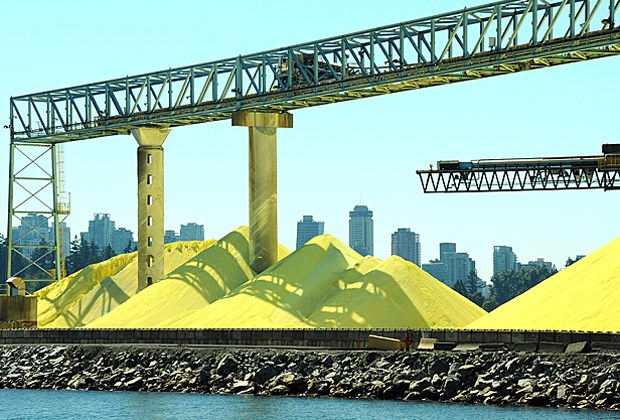Despite considerable slowdowns in swaths of the Canadian and world economy, Port Metro Vancouver is humming along, according to annual statistics released last week.
“It’s really quite a pleasing year. The global economy is a little soft but because of the diversity we have through the port, we’re really quite well protected from that,” said Robin Silvester, president and CEO of Port Metro Vancouver.
Imported steel, which enters the port via Western Stevedoring’s terminals, had a notable decline. With bargain basement oil prices, capital projects in Alberta have been put on hold, Silvester said. Metallurgical coal too was down slightly, thanks to slumping demand.
Any losses in coal and steel, however, were buttressed overall by huge jumps in bulk grain and fertilizer exports, all of which come from the North Shore’s Richardson International, Cargill Canada and Neptune Terminals.
“Potash is one of the strong, good-news stories in terms of volumes. It’s another record year in potash exported through the ports at 8.6 million tonnes,” Silvester said.
Bulk grain exports increased 10 per cent in 2015 to a record 21.6 million tonnes. This follows a 22 per cent jump the year before.
“Really those strong volumes are underlining the importance of investments like the Richardson expansion, what Cargill is doing to improve their capacity and ultimately underpinning the business case for G3,” Silvester said, referring to new grain terminal proposed for the foot of Brooksbank Avenue. “I think it’s a good story.”
Unlike coal and steel, which are more subject to ups and downs in the economy, grain and potash are driven by strong fundamentals, Silvester said.
“If you look at the steady growth in the world’s population, projected to continue towards nine billion … I think Canada is very well placed to help feed the world and to see economic benefit as a result. Most of that’s going to be coming out through this port,” he said.
G3 is hoping to build a rail loop and 48 silos capable of holding 180,000 tonnes of grain. Public consultation on the project is largely now complete and concerns raised by the community will be included, along with possible mitigating measures in the application. A decision by the port on the approval process is expected in late spring or early summer, with the company planning to have the terminal up and running by 2019.
Should the project get the go-ahead, the existing Lynnterm West Gate breakbulk operations at the site will be moved over to the East Gate facility. That will likely require more land either being purchased from the adjacent industrial neighbourhood or swapped with an undeveloped piece of port land off Dollarton Highway north of Maplewood.
“There’s a lot of discussions taking place at the moment. We’d hope it would all drop into place reasonably soon,” he said.
Over the last year, Silvester has been putting the word out to business and community leaders that the dwindling supply of industrial land in the Lower Mainland needs to be protected from encroaching residential development.
The port has approved development of the old Dollarton Shipyards site next to Cates Park for condos, however. Ideally, it would have been developed for industrial use but it is not served by rail and not well served by highway access, Silvester said.
“The priority on the North Shore really is around making best use of the land we have,” he said. “Looking out across the region as a whole where there are still unused parcels of industrial land. We absolutely have to protect them for the good of the region as well as the good of the nation.”



